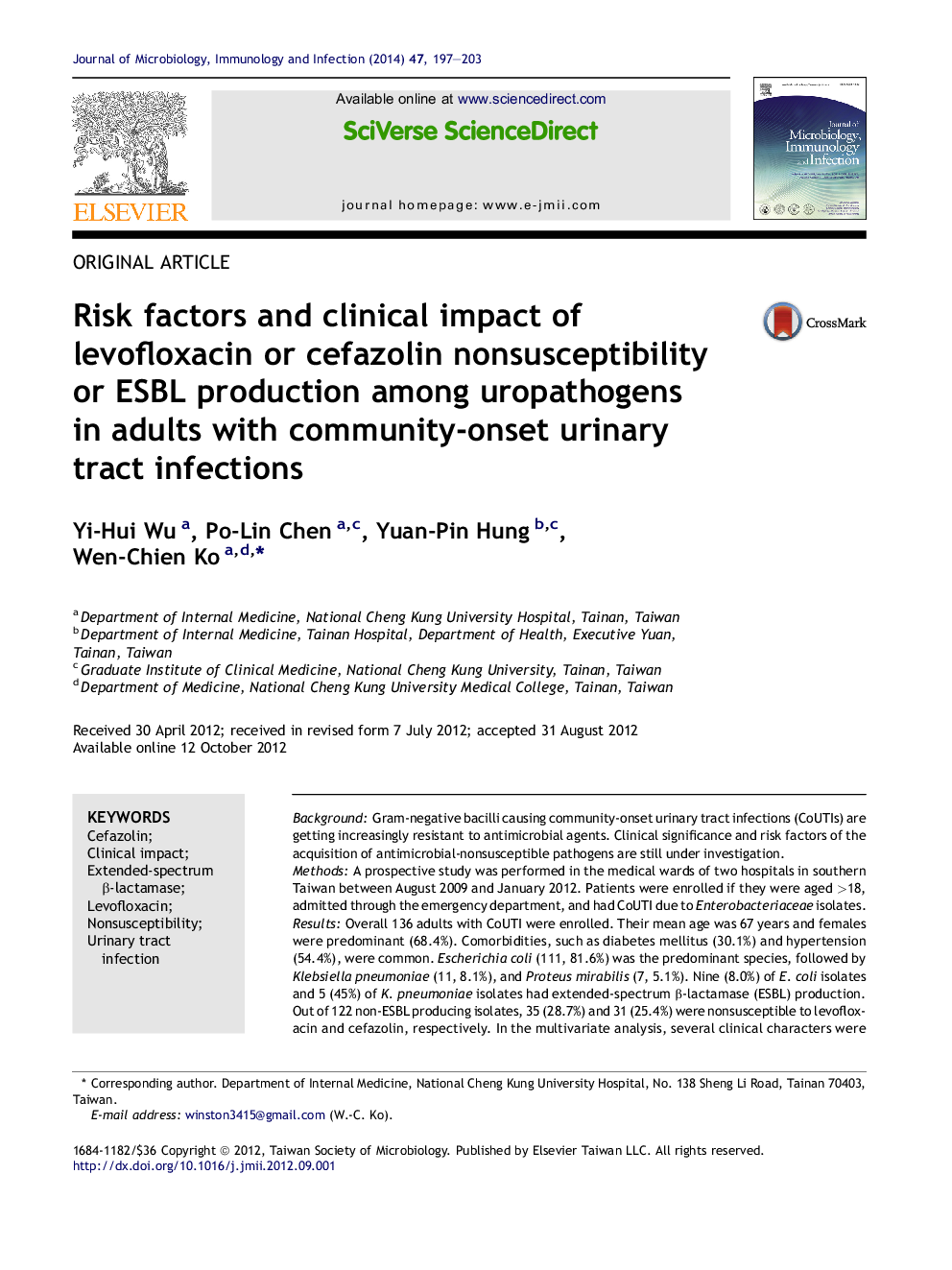| کد مقاله | کد نشریه | سال انتشار | مقاله انگلیسی | نسخه تمام متن |
|---|---|---|---|---|
| 3378046 | 1220060 | 2014 | 7 صفحه PDF | دانلود رایگان |

BackgroundGram-negative bacilli causing community-onset urinary tract infections (CoUTIs) are getting increasingly resistant to antimicrobial agents. Clinical significance and risk factors of the acquisition of antimicrobial-nonsusceptible pathogens are still under investigation.MethodsA prospective study was performed in the medical wards of two hospitals in southern Taiwan between August 2009 and January 2012. Patients were enrolled if they were aged >18, admitted through the emergency department, and had CoUTI due to Enterobacteriaceae isolates.ResultsOverall 136 adults with CoUTI were enrolled. Their mean age was 67 years and females were predominant (68.4%). Comorbidities, such as diabetes mellitus (30.1%) and hypertension (54.4%), were common. Escherichia coli (111, 81.6%) was the predominant species, followed by Klebsiella pneumoniae (11, 8.1%), and Proteus mirabilis (7, 5.1%). Nine (8.0%) of E. coli isolates and 5 (45%) of K. pneumoniae isolates had extended-spectrum β-lactamase (ESBL) production. Out of 122 non-ESBL producing isolates, 35 (28.7%) and 31 (25.4%) were nonsusceptible to levofloxacin and cefazolin, respectively. In the multivariate analysis, several clinical characters were found to be independently associated with CoUTIs due to levofloxacin-nonsusceptible (i.e. males, recent hospitalization, underlying old stroke, diabetes mellitus, and altered consciousness, or absence of chills, pyuria, or tachycardia), cefazolin-nonsusceptible (i.e. males, recent hospitalization, underlying old stroke, absence of fever or chills), or ESBL-producing isolates (i.e. recent hospitalization or antimicrobial therapy). All patients survived and discharged. However, the patients with CoUTIs due to levofloxacin-nonsusceptible (16.1 vs. 7.5 days, p < 0.01), cefazolin-nonsusceptible (15.4 vs. 8.4 days, p < 0.01) or ESBL-producing (16.7 vs. 9.6 days; p < 0.01) pathogens had a longer hospitalization stay than those due to their susceptible comparators.ConclusionSeveral host factors were recognized to be independently associated with the acquisition of UTIs due to levofloxacin- or cefazolin- nonsusceptible, or ESBL-producing Gram-negative bacilli. The clinical impact of UTIs due to nonsusceptible uropathogens is that they result in the prolongation of hospital stays.
Journal: Journal of Microbiology, Immunology and Infection - Volume 47, Issue 3, June 2014, Pages 197–203